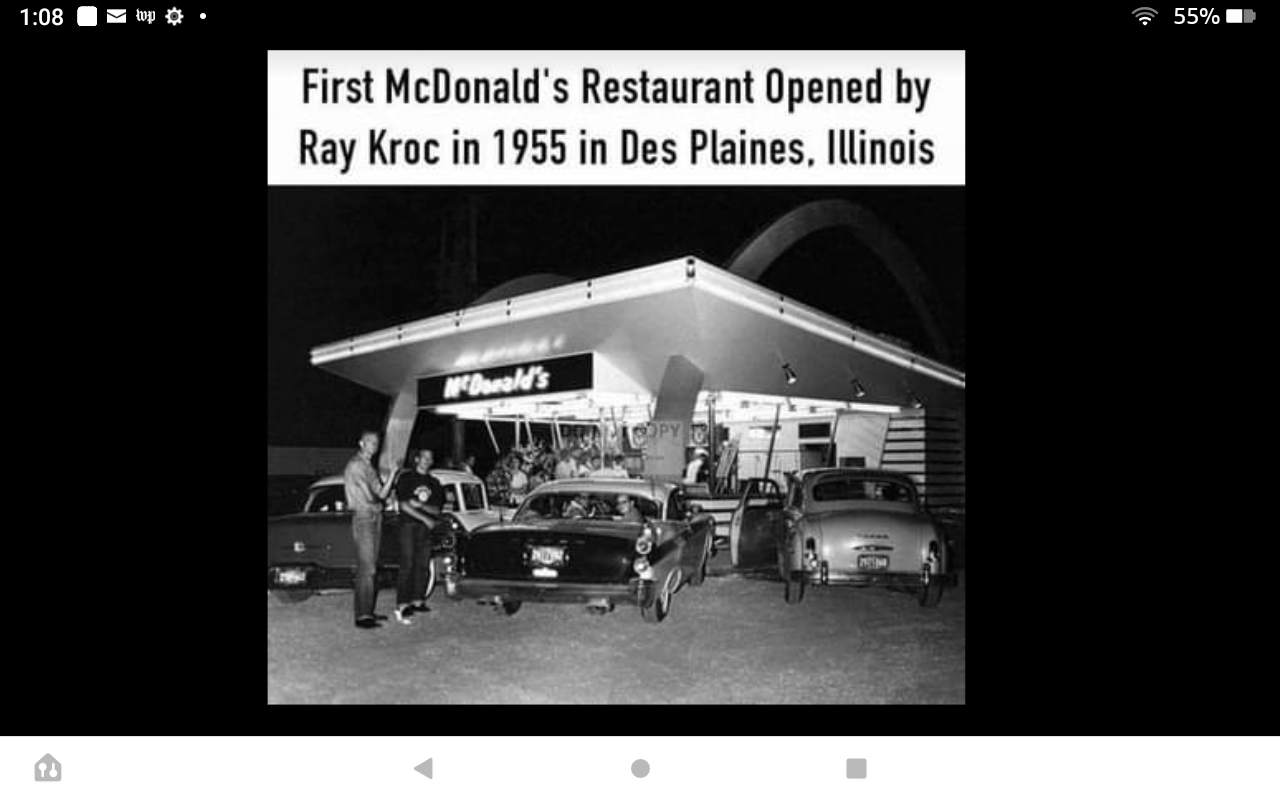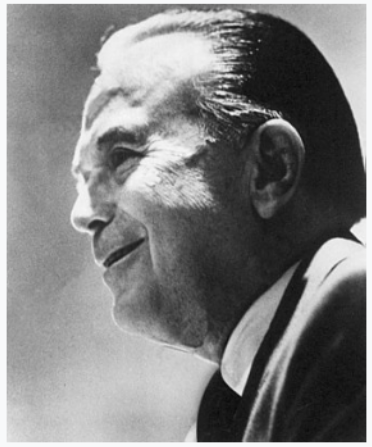Mcdonald's
Click for PDF version of Ray Kroc -- Mcdonald's -- Biography
Click for Raymond Albert Kroc - Wikipedia page
Introduction

Ray Kroc
October 25, 2014 RAY KROC Foundor McDONALD’S by Richard E. Hattwick Ray Kroc was born in the Chicago suburb of Oak Park in 1902. He dropped out of high school because he was too anxious to start earning money. Brimming with confidence, Kroc began his career with two jobs. By day he would sell ribbon novelties, door-to-door. By night he would play the piano for various groups on a one night stand basis. Within a few years he had graduated to selling paper cups to restaurants and playing the piano six days a week for a local radio station. He was only able to work in five hours of sleep at night, but as he put it, “I was determined to live well and have nice things, and we could do so with income from my two jobs.” Ray Kroc eventually decided to give up piano playing and devote himself full time to selling paper cups. He was an outstanding salesman and soon had 15 salesmen working under him. At the age of 35 Ray Kroc decided to strike out on his own. He borrowed heavily to raise the money to start a company selling a multiple spindle milkshake mixer. His wife was worried about the risk he was taking, and argued against the move, but Kroc told her, “You have to take risks, and in some cases you must go for broke.” For more than a decade, Ray Kroc made a living marketing his mixers. He set up a tiny office run by a secretary while he traveled all over the country visiting potential customers and operating sales booths at restaurant and dairy association conventions. He made good money, but operation was small. It was not until 1948 that he was able to hire a bookkeeper. In a good year he would sell 5,000 mixers. By 1950 Ray Kroc was convinced that the mixer business had peaked and he began a serious search for a new product to sell. He heard stories of the amazing volume of business being done by two Californians at their San Bernardino, California, drive-in restaurant. His curiosity was further aroused when the McDonald brothers ordered a large number of mixers from him. And so in 1954 Ray Kroc went to San Bernardino, California, to find out what the McDonald brothers were doing with their drive-in restaurant. What Ray Kroc found in San Bernardino was the model for the fast food revolution. The McDonald brothers sold a limited menu of hamburgers, french fries, and drinks. They had standardized the production process in a way which cut costs and maintained a high level of quality. By selling a high volume of food every day they could make a good profit at an unbelievably low price for the food being sold. Hamburgers, for example, sold for 15 cents even though “everyone knew” that you couldn’t make a profit at less than 25 cents per hamburger. Kroc recognized the potential national market for this approach. He signed a contract with the McDonald brothers which allowed him to own and franchise similar restaurants across the country. Kroc would charge each franchise $950 plus 1.9 percent of gross sales. The McDonald brothers would receive 0.5 percent out of Kroc’s 1.9 percent. Kroc returned to Illinois where he prepared to pen a demonstration store. There were numerous complications involved, but Kroc overcame them all and opened his Des Plaines, Illinois store on April 15, 1955. Help was hired to run the store during the day, while Kroc continued to work at his mixer company. But after work Kroc plunged into the task of expanding his McDonalds’ chain. In May of 1955 Kroc was visited by Harry Sonneborn, who had just resigned as a vice president of the Tastee Freeze company. Sonneborn had observed the new McDonald’s restaurant and concluded that the concept was a winner. He told Kroc that he would like to get involved. Ray Kroc did not believe that he could afford another employee, but he also felt that he needed the skills which Sonneborn had to offer. And so Kroc asked Sonneborn to figure out the lowest possible salary he could live on and Kroc would then decide whether or not he could afford Sonneborn. Sonneborn came back with a figure of $100 a week take home pay. Kroc hired him at that salary. It was one of the wisest moves ever made by Ray Kroc, for Sonneborn’s financial innovations were to become crucial for the rapid growth of McDonald’s. Ray Kroc’s concept of his business was that of a family oriented restaurant giving quick service. The limited menu of standard quality items would be offered at a low price. The food would be served in pleasant surroundings exuding cleanliness. In Kroc’s view, it was essential to maintain quality standards throughout the chain. To do so, thought Ray Kroc, it would be desirable to build the restaurants and then lease them to the franchisees. This policy, along with the terms of the franchise agreement, would enable McDonald’s to maintain the desired quality standards. However, in order to build the restaurants, Kroc needed capital. And here is where Sonneborn’s skills came into play. Harry Sonneborn devised an arrangement whereby a local land owner would lease his land to McDonald’s, taking a second mortgage. Kroc and Sonneborn would then go to a bank and get a first mortgage loan on the building. It was a technique which worked because in those days, the land owners did not have any other groups willing to lease the land. Later, of course, competition for the fast food sties would make the arrangement impossible to implement. Sonneborn also developed a formula whereby the franchisee made monthly payments covering the mortgage payments plus a profit for McDonald’s. This became such a lucrative source of revenue that some observes called McDonald’s a real estate business with a fast food business sideline.
Copyright 2001 American National Business Hall of Fame. All Rights Reserved.
Click for Slides related to Ray Kroc
Download slideshow related to Ray Kroc – Mcdonald's
ANBHF Laureates
Our laureates and fellows exemplify the American tradition of business leadership. The ANBHF has published the biographies of our laureates and fellows.
Some are currently available online and more are added each month.

